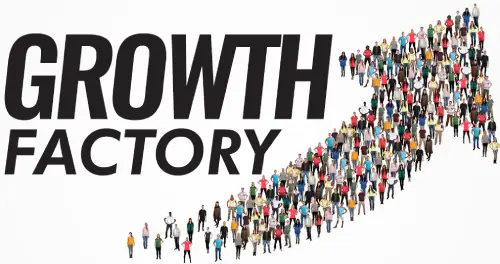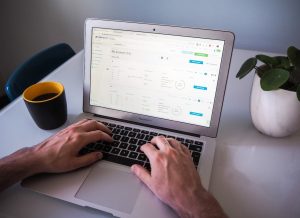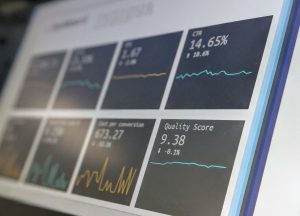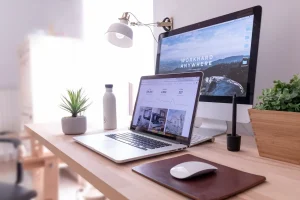On-page search engine optimization is well-known as the base of any project with SEO. No matter how well you’re performing your Off-page search engine optimization for your website, if your website’s On-page SEO isn’t properly done you won’t get the desired result. Besides Google has begun to close all of the doors of building links and providing more value to the design and content. As both design and content are aspects of on-page search engine optimization you have to provide more value to all elements which are directly related to your blog or website.
Inside this chapter I’ll discuss the most important aspects of on-page SEO which impact search engine ranking and a few typical on-page SEO mistakes which might ruin all of your efforts and hopes.
Do’s:
Design User-Friendly Navigation
Making it simple for users to navigate your site is as critical as any additional element of your site, because if users can’t locate the data they want, they simply will exit and go to your competition. Therefore, you must consider your target audience, the audience’s age, technical capability and additional demographics, and then work out a structure of navigation which is appropriate for this circle of people.
Consistently updated content (blogs)
All websites need user-centric, keyword rich content to be added upon a continual basis, it’s why I tell each business owner I come across that they have to have a blog. It must be updated with fresh content, 2 – 4 times per month (or more) in order to encourage the search engines to frequently index your site. As an extra bonus it additionally encourages users to revisit your site because of the fresh, new content they’ll discover there.
Have a sitemap
Sitemaps help search engines index a site; therefore, be certain to have an XML sitemap, as it’ll assist the search engines in knowing which pages are most critical in your site and with technology today this may be automatically created and updated; thereby aiding the search engines in continually indexing your site.
Domain name
The domain isn’t just the identification, yet additionally the first impression of all websites or domains. Thus, you have to be very wise and serious about selecting a domain name. Domain names aren’t just your website’s URL, yet additionally your brand. A few tips to choose SEO-friendly domains are provided below:
- Keep domain name brief
- Select a name which is simple to recall
- Domain names ought to reflect the subjects of your website
- Don’t use any sign or number in the domain name
- .COM.AU is better, yet if your website is suited to any specific project, use a domain extension according to that
- It is good that you keep your high targeted keyword within the domain yet, in this case, do not be overly aggressive
Loading time
In 2015, loading time has become amongst the most vital search engine ranking factors that is an important part of on-page search engine optimization. Slow loading speed will mean you’ll get left behind. For this reason hundreds, perhaps thousands of website’s were hampered and lost a large amount of possible traffic. Thus, you have to use fast and reliable web hosting services for better ranking and performance.
Responsive design
The amount of mobile users is quickly rising in this age of high technology. Thus, your website has to have the ability to satisfy mobile users alongside desktop users. Besides Google additionally likes responsive sites as they offer better service to all types of users. Therefore, use a responsive design for better ranking as a portion of on-page search engine optimization. WordPress users easily can use responsive themes for improved results.
Title
The title is well-known as the face of any blog or website as the title largely appears in the SERP’s. It is a vital aspect of on-page search engine optimization. Therefore, make certain that you place your keyword inside the title. Keywords will work a lot better within the title’s front part.
Description
The description includes the 2nd most important aspect of any website that appears directly after a title. It provides a brief description about a page or site that greatly can impact search engine optimization ranking and CTR (click through rate). Therefore, set the keyword within your description zone tactfully both for attracting visitors and SEO ranking.
Content length
These days Google is focusing more on content length. Google believes that long content may offer detailed information in regard to any subject which may satisfy its readers. Thus Google prefers long content to be ranked on page one. Attempt to write a minimum of 500 word articles for better ranking. But, I’ll strongly recommend that you decorate your website (blog) with posts that are over 800 words.
Targeted keywords
Without any knowledge about search engine optimization and without delving deep into keyword research you can’t create SEO-friendly posts. So you must target your primary keyword in the content. It is best to keep the density of the primary keyword between 1.5 – 2.5 percent to remain safe from Google.
Image
Google’s crawler can’t yet read pictures or any additional graphical objects. So you must set ALT tag for all images and place keywords for better ranking and crawling. It is a vital aspect of on-page SEO that can’t be denied. Besides utilizing the keyword, the title of the image also will work just fine.
Inbound links
In order to make the process of link building natural you have to build up the links in a regular way. Inbound links will mean linking a single page of your website with an additional page. These days such a process of link building works well.
Outgoing links
In order to make your post more authentic, occasionally you must create links to an additional relevant site or webpage inside your content.
Other DO’s
- Setup URLs to be SEO-friendly
- Main content ‘above the fold’
- Add text near top of the page
- Include an About Us and Contact Us page
- Link to Social sites
DON’TS:
Spammy domain & hosting
If you have a desire to remain safe in the eyes of Google and other major search engines, you have to avoid all types of spammy hosting servers and domains. Do not make any type of link association with spammy blogs and websites. Basically, the majority of free hosting services that permit the hosting of webpages for free are chock-full of spammy content and sites. Also, a handful of free domain extensions such as ml, .co.cc, .tk, etc also are well-known as spammy websites. Therefore, you should avoid those types of free extensions, too.
Over-optimization
As with all other things in the world, optimization possesses both pros and cons. If your website isn’t optimized properly it might not appear on page one of Google. On the other hand, over-optimizing is going to kick your website out of the search engine. Therefore, be careful when optimizing your website. To remain safe you aren’t permitted to perform some actions like:
- Do not exceed title over 70 characters (68 characters are best)
- Do not repeat keywords in the description and title
- Do not randomly input keywords within the content
Using the same description
Using the same description for multiple pages of one website surely will bring disaster. This action is well-known as spamming to Google. Therefore, do not use the same old boring descriptions for all of your pages to remain safe from the search engine.
Using the same ATL tag in an image
It’s the same case as a description. Many people do not care about this truth, yet ALT tags actually impact search engine rankings. I know the torture of punishment by Google as I suffered when I created the same ALT tags for multiple photos in one of my niche websites. So never use the same ATL tag for every image.
High keyword density
It is good for you to keep keyword density from 1.5 – 2.5 percent depending upon the length of the content for better on-page search engine optimization. A smart suggestion isn’t to exceed the keyword density restriction to more than 5 percent. If you go beyond this keyword density limit your website might get penalized by the search engine.
Duplicate and low-quality content
These days, low quality content is the main reason for being penalized by Google. As Google rolled out Panda 4.1, an extremely smart algorithm as far as identifying low quality and copied contents goes, you have to be careful in the instance of publishing fresh content. So, it is good to publish just a single high quality piece of content rather than publishing hundreds of low quality and duplicate content.
Other Don’ts:
- Have too many coding errors
- Block Google’s robots
- Add flash or large photos
- Have large photos or a slider at top of page




